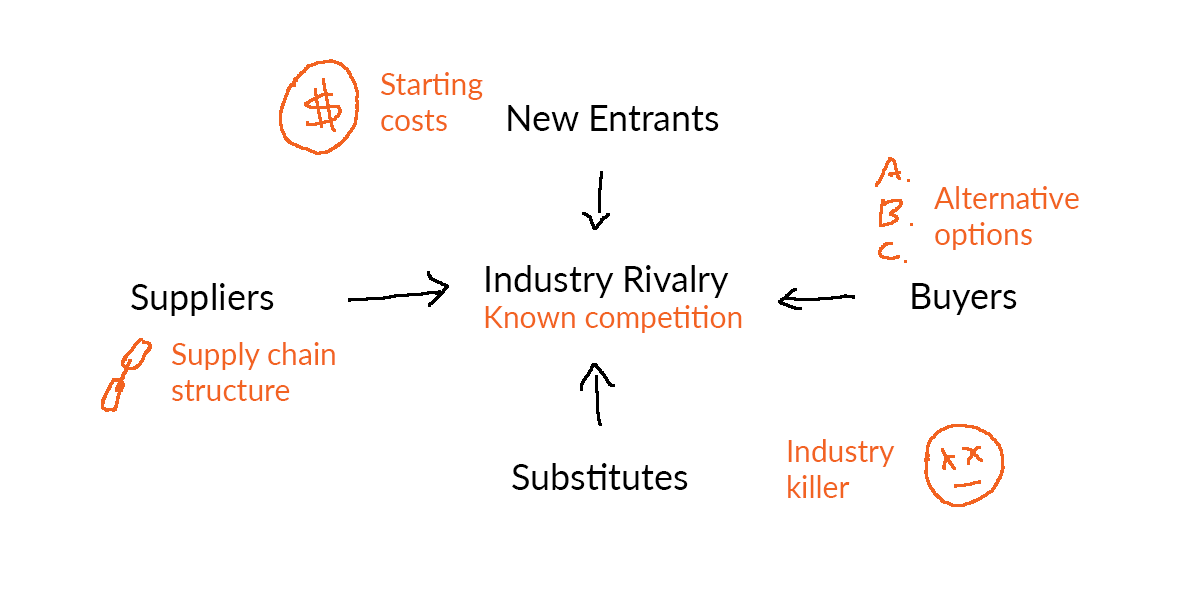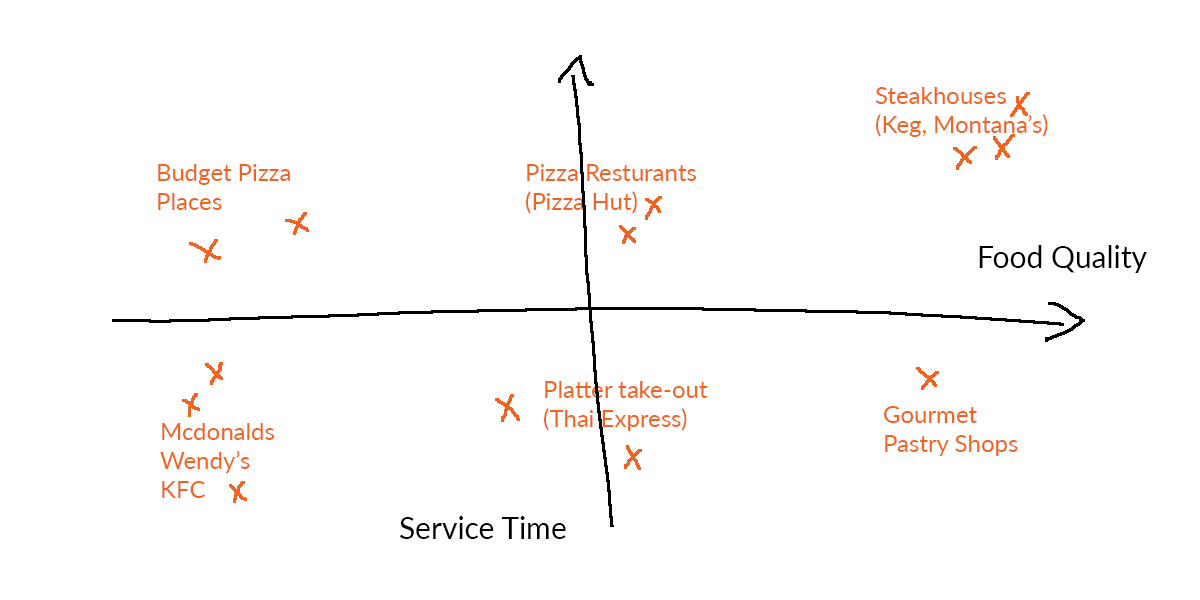Quick sanity checks for your ideas (industry analysis)
Quick sanity checks for your ideas (industry analysis)
Basic industry analysis will help you understand the environment that your idea resides in. Your goal here is to investigate as much as you can about potential competitors, early adopters, and mainstream users. This will prepare you to build your business canvas later.
Since ideas and industry all differ, we’ll present basic tools for you to investigate your industry. Let’s use a hypothetical startups business in the breakfast food industry as an example.
Breakfast Co. is a breakfast solution for busy morning commuters.
Porter’s Five Forces
Porter’s Five Forces analysis is a framework for visualizing the connections between the necessary elements that a business require to thrive in an industry, and using that to assess competitors within an industry.

The framework helps you to build a model of how you think the industry operates. Don’t just label a force as high/low and be done with it, the point at this stage is to think about what each force represents.
The Five Forces:
- Bargaining power of suppliers
- think supply chain structures
- Threat of new entrants
- think starting costs
- Existing competitors
- think current alternatives
- Threat of substitutes
- think if there can be a product that eliminates this industry
- Bargaining power of buyers
- think what other options are available for buyers
Let’s think about the types suppliers for Breakfast Co., they differ based on if Breakfast Co. wants to be a food provider or a distributor instead.
Breakfast Co. needs to either get ready-made meals (distributor), or raw materials and make cooking a primary business activity (provider).
In the food provider case, the norm is few large suppliers providing large volume. Their bargaining power is high unless you are their biggest client.
In the distributor case, the norm is many smaller suppliers leveraging you as a channel. Their bargaining power is much lower.
A general rule is that: as number of alternatives go up, the bargaining power of individuals go down.
I know we’re already thinking of employing even smaller suppliers to lower supplier bargaining power further. But we’ll leave Uber for breakfast as a separate exercise.
Positioning Map
The Positioning Map let’s you see service gaps within the competition, and explore if there’s a viable business model within that gap.
This is when you list out all your competitors (current alternatives that users are adopting), then plot them based on two attributes.

Naturally, you’d plot multiple maps with different attributes on their axes. When you encounter a gap (area on plot where no competitors reside), consider if your business can fit in that gap.
In the Breakfast Co. example, we can see there is a gap in high quality, low service time breakfast for commuters on the go. Which prompts us to think if a low volume breakfast catering service can be viable.
Usually people do not know what are good axes to pick out for a positioning map. In Larry Keeley’s Ten Types of Innovation, companies are broken into ten dimensions. Pick two attributes that relate to two dimensions that you believe are core to this industry (there will be a few sets), this will likely give you a set of relevant maps to help you define your positioning.
The Ten Dimensions:
- Profit Model
- Network
- Structure
- Process
- Product Performance
- Product System
- Service
- Channel
- Brand
- Customer Engagement
We’ll explore examples in the Ten Types approach in depth another time. For now, explore a few service gaps and imagine how would businesses operating in those gaps (niches) function.
Next up we should build business models around these niches to investigate their feasibility.


